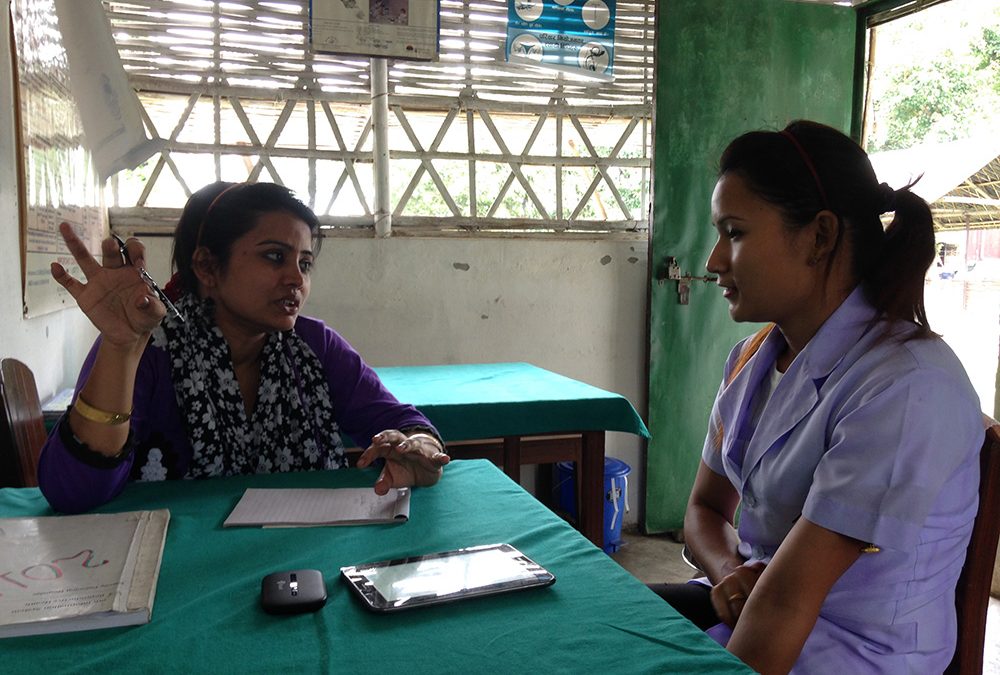As a Health Associate working in Damak, Nepal, Salina Khatoon and her team were facing a situation all too familiar to many UNHCR employees. Health services in the country’s two camps for refugees from Bhutan were about to go through a major transition, but the team was too caught up with immediate needs to plan ahead efficiently.
“We were so busy that we could only focus on our day-to-day activities. We didn’t have time to try something new, let alone the funds to do it,” Khatoon recalls.
Her job was to monitor health and nutrition programs implemented in Nepal’s refugee camps by UNHCR’s local partner, the Association of Medical Doctors of Asia (AMDA) – Nepal. As the number of refugees living in the camps were declining due to the third country resettlement programme, UNHCR was looking for new approaches to provide health services in an efficient and effective manner to the remaining refugee population. In addition, limited financial resources due to emerging refugee crisis in other parts of the world meant that the office has to find a creative way to manage its program/assistance for the refugees in a sustainable manner.
Khatoon started chatting with refugees and staff working at each of the three primary health care centers in the camps to identify the programs that could be improved. She found out that health care delivery during nighttime was especially challenging. With no doctor on site at night, patients were cared for by medical assistants who lack the credentials to treat complicated cases. As a result, they were often transferred to primary, secondary and tertiary health care centres in nearby towns, which is more costly than treating at camp clinic.
Khatoon also noticed that certain patients insisted on being transferred, because seeing an actual doctor increased their sense of satisfaction. But this was inflating the number of nighttime referrals, further draining the system. Bringing doctors to the clinics at night, however, was out of the question.
There was perhaps one way to solve this problem. Khatoon knew that BPKHIS (B. P. Koirala Institute of Health Sciences, a university hospital) had been successfully providing telemedicine services to three government primary health care centers in the eastern region since April 2015. If telemedicine was working in government health centres, why not in the camps?
Armed with a proposal, Khatoon turned to UNHCR Innovation for support. She was accepted as an Innovation Fellow in 2014-2015 after her first unsuccessful attempt in 2013-2014 cohort. The Fellowship would provide her with what she and her team had been missing all along: time, funding, and support.
The workshop provided by UNHCR Innovation gave her some much-needed tools to take her concept from paper to reality. Through brainstorming sessions, focus group discussions, in-depth interviews, discussions and role-playing, Khatoon was able to test her assumptions and fine-tune her project down to the smallest details. She initially thought telemedicine could work using Skype on any type of mobile device, but soon realized the system required better infrastructures with a reliable Wi-Fi connection and quality equipment. She opted for a large-screen television and a high definition webcam instead, and even considered how lighting and furniture could facilitate communication between patients and the doctors. And she planned for a solar generator to provide backup power during outages.
As her concept became more refined, Khatoon realized she didn’t have to restrict telemedicine to nighttime consultations. During the day, doctors could communicate directly with specialists in government-run secondary and tertiary health care centres, which could help bring down the number of referrals.
“So much has changed since the beginning of the project. The concept note is totally different from what it was at the beginning,” Khatoon explains.
Connecting the camp’s health clinic to the government’s services could have one major long-term benefit. When the resettlement process comes to an end, health care delivery in the camps could perhaps be taken over by the government, in which case the transition would be facilitated by existing linkages. Khatoon brought BPKHIS staff on board early on to make sure both systems would be compatible; they shared lessons learned from their own experience with telemedicine, and will train the camp clinic’s health care practitioners to use the new system once the pilot project starts.
Khatoon knows from her training with UNHCR Innovation that her project may not work out as expected, and perhaps even fail. “They said to us, don’t fall in love with your project, because we don’t know if it will work or not,” she recalls. “At least we will have learned whether telemedicine can work in a refugee camp setting.” The most important lesson she’s drawn from her project, however, is a personal one.
“I’m doing this independently from the beginning to the end. It has definitely built my confidence and showed me I could lead this project with the support of my colleagues.”

